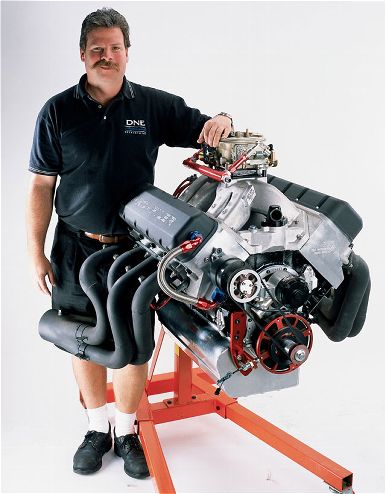

That's right--more than 1,000 horsepower and almost 900 lb-ft of torque from 565 ci on pump gas. No nitrous, no blower, no turbo--plus a single four-barrel and no need to twist the daylights out of the thing. It idles happily at 900 and maxes out at a fairly mild 7,100, but get this: The beast is already making 1,000 hp by 6,000 rpm. And in our day of dyno testing at Westech, this mill repeated the feat 20 times as tuning was optimized.
Seemingly impossible stuff, but true thanks to the engine-building hand of Dave Ebbert at DNE Motorsports Development. The whole thing started when Marty Strech of Fountain Valley, California, called Dave and said he wanted 1,000 hp for his 21-foot Eliminator Daytona jet boat, and he wanted his grand on the motor with nothing more than 91-octane pump gas so he'd be legal for some sanctioned boat drag racing events. In case he felt the need for more, he also wanted enough inherent strength to be able to fog an extra 400hp nitrous hit.
Ebbert knew he'd need to go above and beyond the usual race motor prep to make peace with the pump gas requirement. The major tools in the octane arsenal are combustion chamber efficiency, camshaft profile, intake manifold/carburetor efficiency, and ignition timing. Maximum attention was also paid to reducing friction, maximizing airflow, controlling blow-by, and stabilizing the valvetrain. As Dave tells us: "By striking the right balance between these areas, we can be more aggressive with the compression ratio and be safe." And even though this Rat's destined for the wet, its temperament makes for an ideal max-effort street machine motor.
So if you're a bucks-up kind of guy with about 30 grand in disposable income, consider this story a how-to. If you're on a shoestring like us, just sit back and be dazzled as we soar into the engine-building stratosphere.